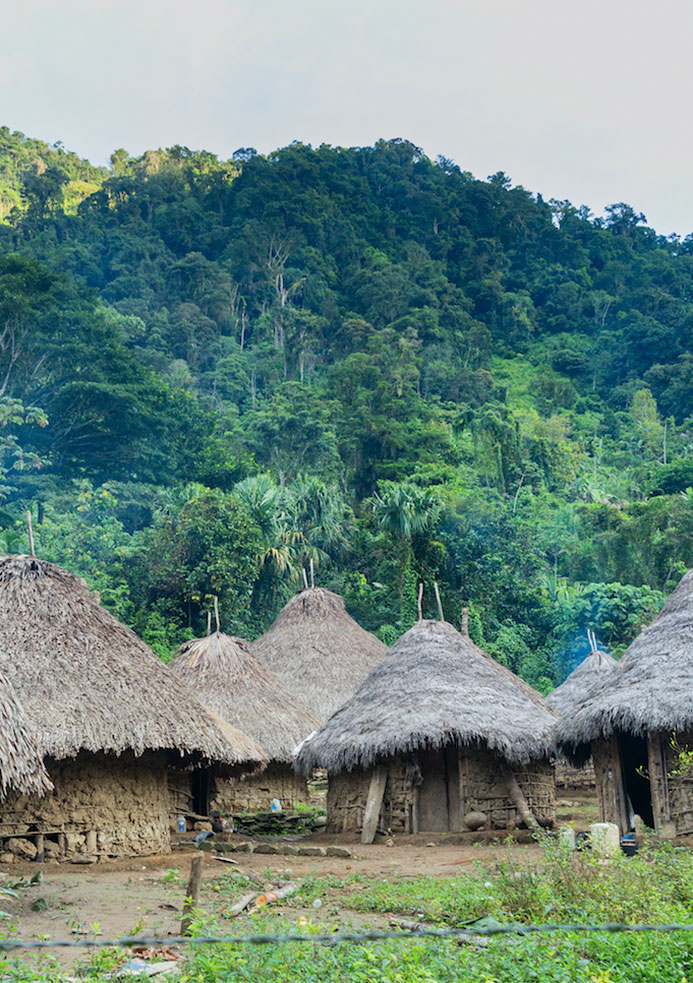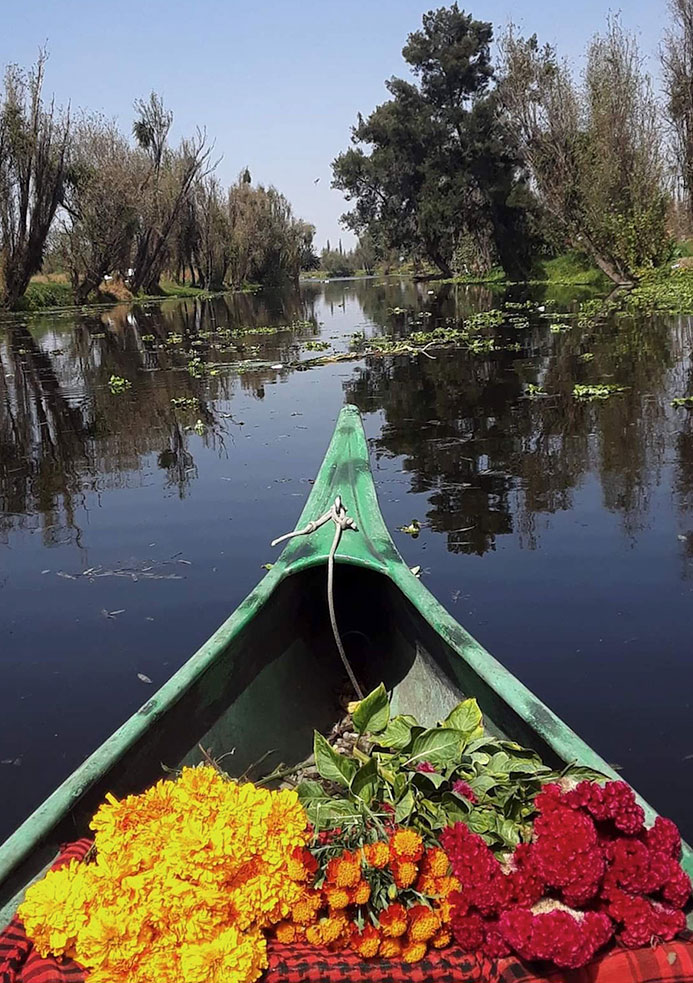Ancestral landscapes you mean what you know
I thought I knew the meaning of an ancestral landscape, because in its syntax two identifiable words appear in my memory.
Landscape, like that changing portion of matter gathering inhabitants with peculiar activities including living elements that do not walk but do make others move (the wind, the sun, the moon, the water) and their tangible and intangible interaction. Ancestral, as a detonator of knowledge translated into actions and instincts inherited generation after generation, an example is a pre-Columbian community that teaches us to cultivate on floating islets to make efficient
the reproduction of food or a mother deer that shows her young the ancestral way to feed no predatory threats.
It seems that everything is very clear, so why do I claim that I did not know the true mean- ing of an ancestral landscape? It is due to a new concept, phenomenology, and the experience. That experience anchored to the process of pure recognition before what the senses cannot hide.
Let me put you in context: after months of confinement, my only relationship with the phenomenological-experience of the landscape was through a screen (as it surely happened to you too), watching documentaries narrated by David Attenborough over and over again to satisfy my enormous desire to explore. I nourished myself with many sounds from the window, the old iron they sell and the cremeria of Chalco. This made me want to go for a coconut to the fantastic lands of Guerrero, but everything was a product of the surrounding atmosphere and that began to make me feel like I was in a Rapunzel complex. Why go down from the tower if everything is inside? Pause, this is where I show you the first learning about what is identitary.
After a period of time, we begin to signify the contextual elements of rooted- ness or identity; In the case that I am telling you, they were more related to Sir David’s voice and his images, than to the values of an ancestral urban landscape that enveloped me in a lakeside past. Identity lies in what we know, it lies in what each piece of experience gives us. These can be connected to each other at a personal or community level, regardless of whether it is a floating, constant or permanent population, just as they can be degraded by external agents (some terrible human habits) to their direct ecological niche.

Kogui o Kággaba, Sierra Nevada de Santa Marta, Colombia.
Photography: Luis Felipe Cardona Monsalve
When the restrictions on access to urban public spaces were lifted, I decided to visit one of the most powerful ancestral landscapes in Mexico city, Xochimilco. That’s how thirsty I was to connect with my roots, with what I am (lesson two of identi- ty), with something of mine and with something that my grandmother Zita (lesson three) has passed on me, that inexhaustible biophilia, a foolish palate of new flavors and legendary rituals translated into limbs that help us move with ease on any journey.

Studio-workshop, Xochimilco
Photography: Carlos Huitzil
Lesson two on the topic requires us to ponder who we are. I think, therefore I am, Descartes told us in the XVII century. This affirmation impels us to generate an observer within reflection, and for such an observer to exist, a concept of being is necessary. Let’s mention the Andean community, whether in Peru, Chile or Argentina, each member identifies as Andean because in their DNA is the mountain, the alpacas, the snow, the altitude, the cultivated tubers, the wind and the stars. That is to say, they are the observers of those values, they reflect on them, they mix with them, therefore they exist, they are and nothing else.
For the third identity lesson I quoted my grandmother Zita, with an Italian name but a lacrustine blood. In her, there are those routes, people, parties, food, techniques and those processes that she learned from living with women and men of water in the 18 original towns or neighborhoods of Xochimilco, extolling in her the tangible and intangible identity characteristics that she shares with me and her other loved ones to this day. Therefore, I am what my grandmother is and she is all that she means.

Incallajta – Cochabamba
Photography: Paisaje caminante
An ancestral landscape is precisely that, a pozole with corn grains and hands that respect its essence. It is a festival that is celebrated every year in the company of all the loved ones; it is also a pre-Columbian relic surrounded by urban growth, it is a river, it is a canal, it is a stepped basement, it is a forest, it is the hill, it is the pulque, the Agave salmiana and its haciendas, is the refreshing panela and it is us looking in the mirror. Ancestral landscapes offer us moments of learning, transformation, acceptance, community
and awareness about our coexistence with the world. Unfortunately we are replacing them with LEDs, concrete or screens and it is urgent for us to signify / inhabit them, because they are the great representatives of our hereditary wisdom due to their resilient, evolutionary, empathic, entropic character and, they will be the only sanctuaries that give us back the sensory and cultural experience after this confinement.
“Ancestral landscapes offer us moments of learning, transformation, acceptance, community and awareness about our coexistence with the world.”

Ancestral landscape Colombia
Illustration: María Alejandra Jimenez Suárez








